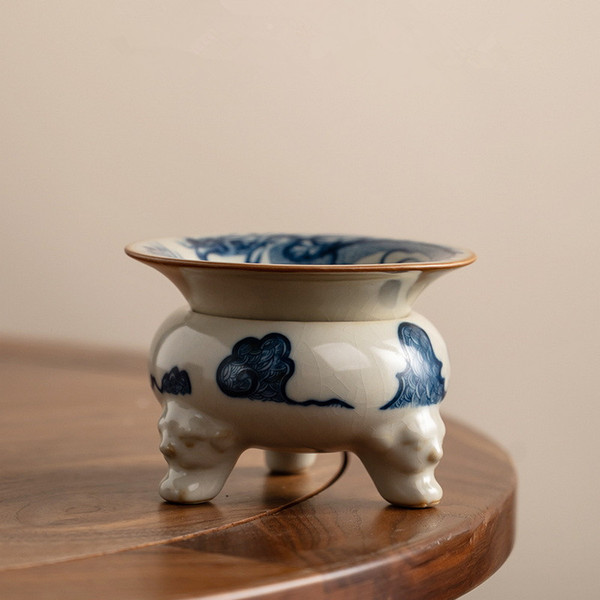Product Overview
This handy little tool opens a whole new world in tea brewing. A simple strainer is traditionally used in gongfu tea ceremony to catch leaves from your gaiwan or yixing clay teapot while pouring into a pitcher. It can also be used to catch leaves when you steep more improvisationally, allowing you to use tempered glasses or even mugs for brewing tea.
Ru Kiln was an official kiln for making porcelain for the Emperor back in the Song Dynasty. They use temperature-controlling techniques to create intricate cracks on the surface of the glaze. Therefore, every piece will have a unique pattern. The cracks will absorb the color of tea, becoming more and more obvious as time goes by. Because of its elegance and uniqueness, the Ru-Kiln technique is still well-loved by many people to date.
In Chinese art, the dragon is often depicted ascending from ocean waves, surrounded by scrolling clouds appearing like tongues of flame. Scrolling clouds are also shown emanating from the body of a dragon. Clouds are among the earliest and continuously invoked auspicious symbols in Chinese art. The mystical 'cloud force' was believed to be a vehicle of the immortals. The dragon represents the authority and power of the imperial throne; the clouds and the waves symbolize two basic elements of the universe. The dragon is revered as a divine creature that symbolizes good fortune, far from the terrifying and evil creature it came to represent in the West. This particular dragon pattern was taken from a Kangxi Period (1662-1722) Chinese porcelain and was sufficiently popular to have been adapted to several different forms. On each of these objects, the dragon’s body is outlined by a trek, a darker outline pigment, which is filled in with a blue wash. This is a specially designed teaware to celebrate the Year of the Dragon in the Chinese Lunar Calendar.












